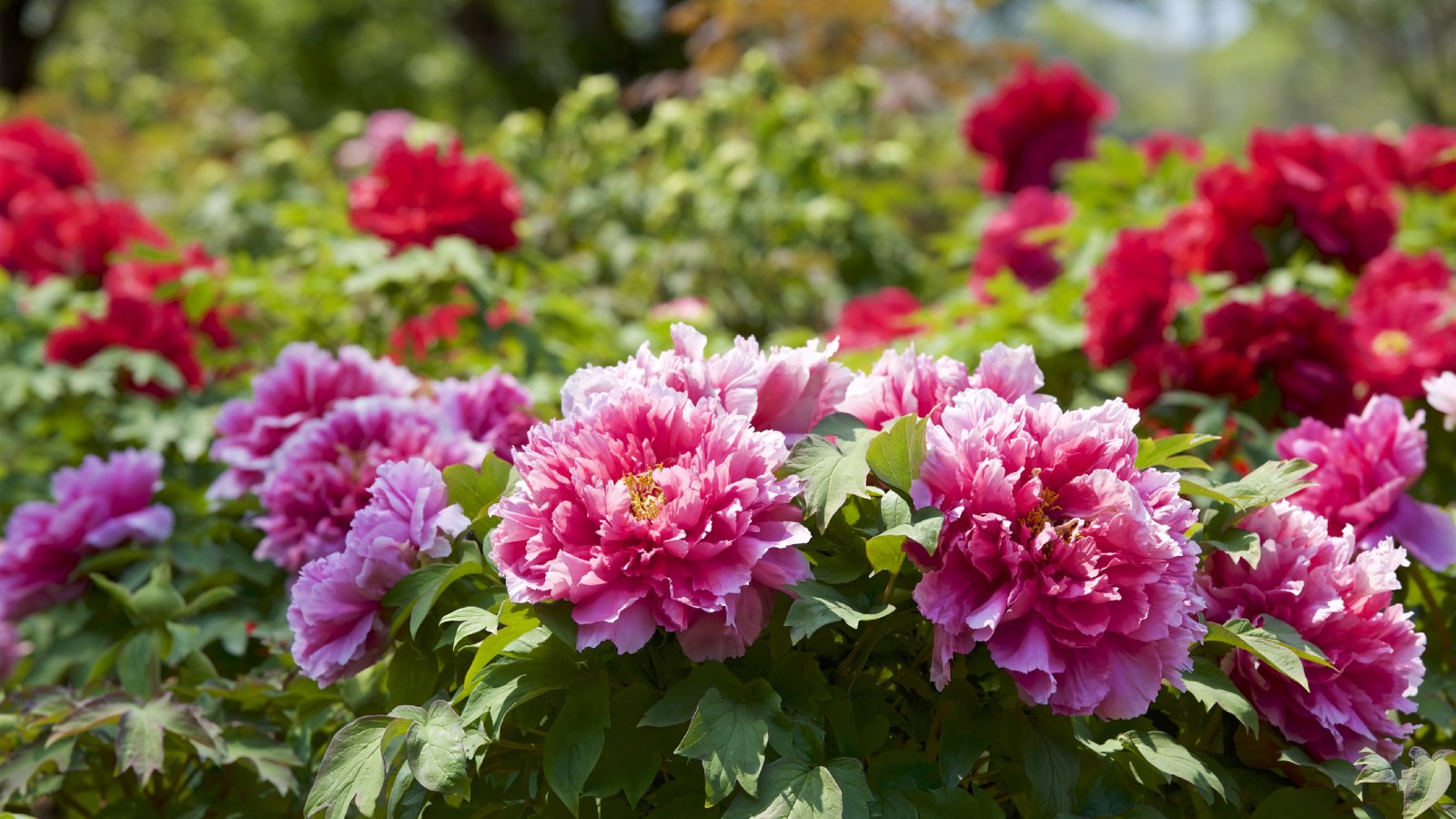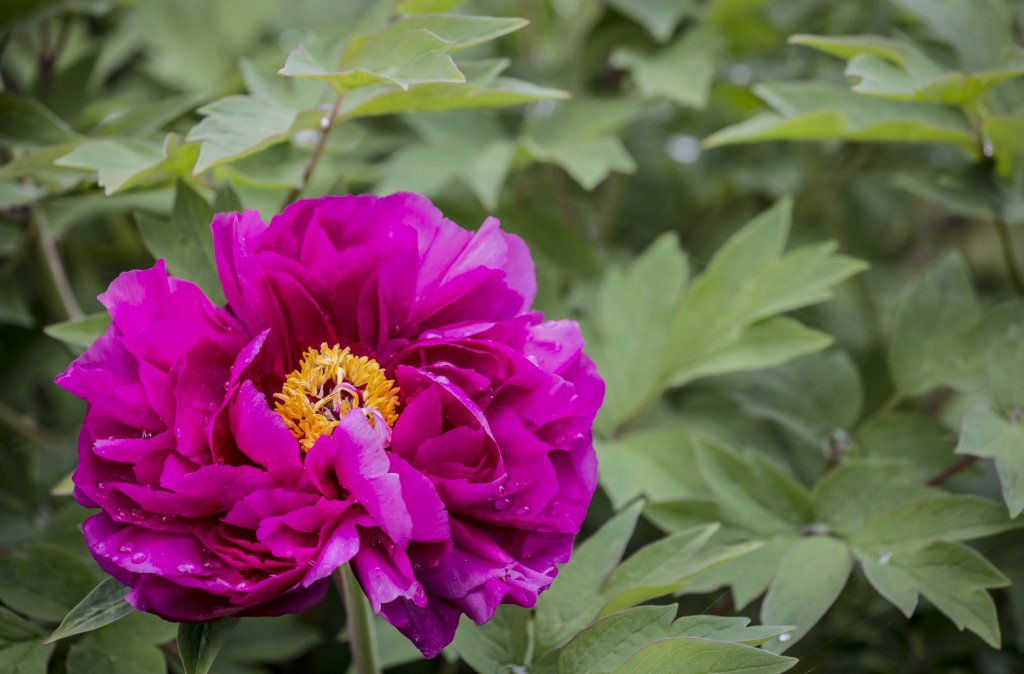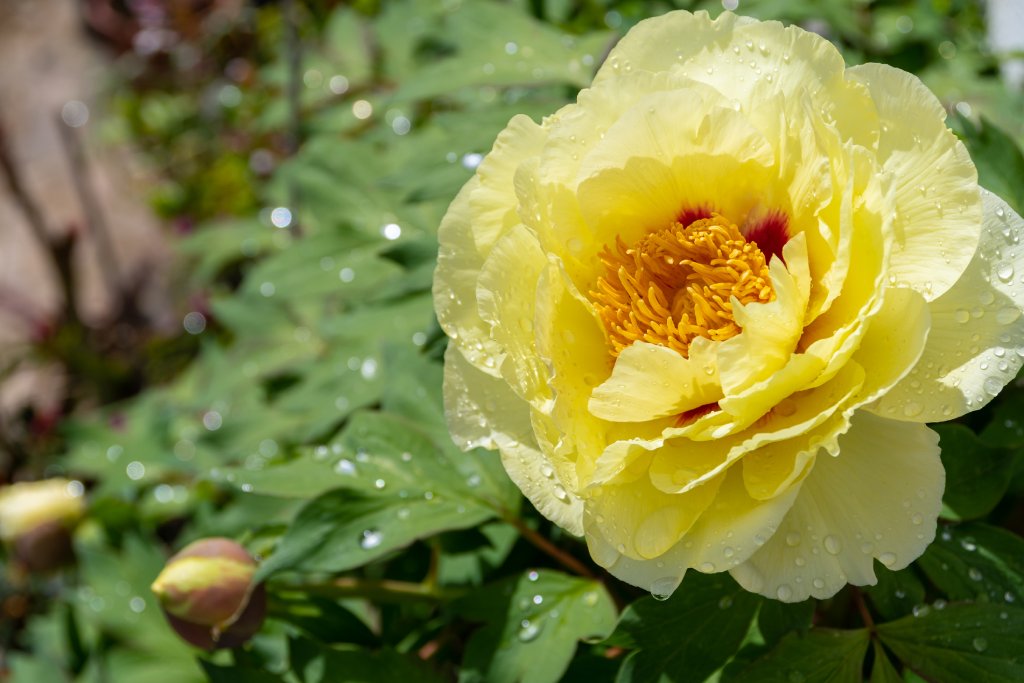Types Of Peonies Every Gardener Should Know
Knowing the different types of peonies helps when you want your garden to include these fabulous plants. Showy and always impressive, peonies are an elegant addition.


Peonies are one of those old-fashioned blooms that don’t go out of style. There are many different types of peonies to suit every taste. The American Peony Society lists 6 individual types of peonies. There are Japanese, Single, Anemone, Semi Double, Bomb, and Full Double. These diverse peony varieties provide unmatched opportunities for the collector. In these categories are herbaceous peony types, as well as tree peonies.
The History of Peonies
Peonies have a role in mythological history, where Leto, mother of Apollo, gave the plant to Paeon, a physician, to cure a wound in Pluto acquired during the Trojan war. In Chinese history, the plant is the main flower in the Imperial Palace Gardens and earned the name "Sho Yo”, meaning ‘most beautiful’. In the 8th century, peonies arrived in Japan where they became a symbol of good fortune and bravery. By the 19th century, peonies were introduced to European and American gardens and became a well-loved perennial favorite.
Common Types of Peonies
The single variety of peony is a classic wild form with 5-15 saucer-shaped petals. A step further finds a semi-double with many more petals. The full double has no visible steam or carpels, just a thick, lush complement of petals. The Japanese form has thickened stamens with a feathery appearance. Anemone peonies have 5 or more outer petals with no discernable anthers. Bomb peonies are a secondary category of double varieties and have a pom-pom appearance.
Herbaceous Peonies
Perhaps one of the better-known peony kinds, herbaceous peonies are long-lived plants. Gentle fragrance heralds their bloom period, and the beautifully notched leaves persist until the first frost. Winter causes the plant to die back but they are extremely hardy and will begin to sprout anew in early spring. The huge flowers make excellent cut specimens and enrich the home in bouquets. Some of these peony types grow up to 3 feet (.91 m.) tall. Some of the more common herbaceous peonies are:
- Raspberry Sundae: Pinkish lavender blooms with blushed centers.
- Miss America: Blowsy white flowers.
- Sarah Bernhardt: Large pastel pink flowers.
- Shirley Temple: Named after the beloved child film star, the flower is an innocent white.
- Coral Charm: A semi-double coral pink bloom.
Tree Peonies

True fans of peonies desire these plants in their collections. Not only are the flowers large, but the woody stemmed plant can grow up to 5 feet ( 1.52 m.) tall. Unlike herbaceous plants which die back in winter, tree peony stems persist over the cold season. Paeonia suffruticosa is native to Tibet, China, and Bhutan. Breeding has led to flowers in hues of red, white, yellow, pink, and lavender. Tree peonies come in single, semi double, and double varieties.
- Black Pirate: Early season with single or semi double flowers in deep red.
- High Noon: Creamy yellow blooms with red centers.
- Vesuvian: A nicely compact plant boasting maroon double petaled blossoms.
- Dusky Maiden: Deeply red double flowers with foliage that assumes reddish autumn hues.
- Age of Gold: Creamy yellow flowers with red flashes.
Itoh Peonies

Itoh peonies are some of the largest flowers, with blooms spanning 8 inches ( 20.32 cm.) across. Originally they were only found in golden hues, but breeding programs have produced coral, red, and white. These varieties bloom a bit after herbaceous peony kinds, supporting the garden’s color parade into summer. The Itoh’s finely cut leaves grow closely to the ground with an appealing and tidy mounded form. These peonies are extremely cold hardy, withstanding temperatures in the United States Department of Agriculture zone 3b. These plants are hybrids of tree and herbaceous peonies.
Other Different Types of Peonies
Fernleaf peonies are dwarf forms and bloom very early with deep red flowers. The delicate foliage stands out among the flowers. They are more difficult to propagate and are therefore harder to find and more expensive than other varieties.
Sign up for the Gardening Know How newsletter today and receive a free copy of our e-book "How to Grow Delicious Tomatoes".
Frequently Asked Questions
What is the most popular peony?
Festiva Maxima has been the most popular peony for over 150 years.
What are the longest-blooming peony varieties?
Itoh peonies are also known as intersectional and can bloom for 3-4 weeks, sporting up to 50 flowers on each plant.
What is the difference between tree peonies and bush peonies?
Tree peonies develop woody stems and are taller than herbaceous bush peonies. Bush peonies die back in winter, while the stems of tree peonies persist.

Bonnie Grant is a professional landscaper with a Certification in Urban Gardening. She has been gardening and writing for 15 years. A former professional chef, she has a passion for edible landscaping.